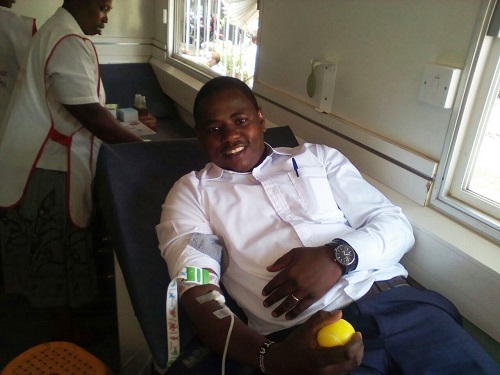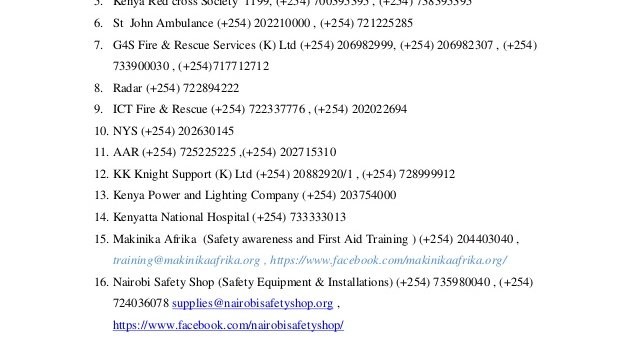Road safety is a vital concern that impacts individuals and communities worldwide, affecting not only personal well-being but also economic stability. I am Ambassador Steve Mbugua, the globally recognized Ambassador of Safety, dedicated to promoting road safety standards and awareness across all sectors. In this article, we explore essential road safety strategies, including risk assessment, driver education, and the implementation of safety measures such as traffic management and vehicle maintenance. By prioritizing road safety, organizations and individuals can significantly reduce the risk of accidents and promote a culture of safe and responsible driving. Let us delve into the key components of effective road safety management and work together to create safer roads for everyone.
Introduction to Road Safety
Road safety encompasses measures and strategies aimed at reducing the risk of accidents and injuries on roads. It involves a combination of infrastructure design, vehicle safety, traffic laws, and driver behavior to create a safe environment for all road users, including drivers, passengers, pedestrians, and cyclists.
Causes of Road Accidents
Road accidents can be caused by various factors, including:
1. Speeding: Driving above the speed limit or too fast for road conditions.
2. Distracted Driving: Using mobile phones, eating, or other activities that take attention away from driving.
3. Driving Under the Influence: Operating a vehicle while under the influence of alcohol or drugs.
4. Reckless Driving: Aggressive driving behaviors such as tailgating, weaving through traffic, and running red lights.
5. Weather Conditions: Adverse weather conditions like rain, snow, fog, or ice.
6. Fatigue: Driving while tired or drowsy.
7. Poor Road Conditions: Potholes, poor lighting, and inadequate signage.
8. Mechanical Failures: Vehicle malfunctions such as brake failure or tire blowouts.
9. Inexperience: Lack of driving experience, especially among young drivers.
10. Pedestrian Behavior: Pedestrians not using crosswalks or ignoring traffic signals.
11. Cyclist Behavior: Cyclists not following traffic rules or riding in unsafe conditions.
12. Animal Crossings: Animals crossing roads, especially in rural areas.
Types of Road Accidents
Road accidents can be categorized into various types based on the nature of the collision:
1. Head-On Collisions: Vehicles crashing front-to-front, often due to lane departure.
2. Rear-End Collisions: One vehicle hitting the back of another, usually due to following too closely.
3. Side-Impact Collisions: Also known as T-bone accidents, occurring when one vehicle hits the side of another.
4. Single Vehicle Accidents: Involving only one vehicle, such as running off the road or hitting a stationary object.
5. Multi-Vehicle Pile-Ups: Involving multiple vehicles, often in high-traffic areas.
6. Pedestrian Accidents: Vehicles striking pedestrians.
7. Cyclist Accidents: Vehicles striking cyclists.
8. Rollover Accidents: Vehicles flipping over, often due to high speed or sharp turns.
9. Hit-and-Run Accidents: The driver responsible for the accident leaves the scene.
10. Intersection Accidents: Collisions occurring at intersections due to failure to yield or running red lights.
11. Animal Collisions: Vehicles striking animals crossing the road.
12. Parking Lot Accidents: Low-speed collisions occurring in parking areas.
Latest Trends in Road Safety
1. Advanced Driver Assistance Systems (ADAS): Technologies like automatic emergency braking, lane-keeping assist, and adaptive cruise control.
2. Connected Vehicles: Vehicles communicating with each other and with road infrastructure to enhance safety.
3. Autonomous Vehicles: Self-driving cars with advanced safety features.
4. Smart Infrastructure: Intelligent traffic management systems and smart intersections.
5. Enhanced Pedestrian and Cyclist Safety: Innovations like pedestrian detection systems and bike-friendly infrastructure.
6. Use of Drones: Monitoring traffic and assisting in accident investigations.
7. Telematics: Using data from vehicles to monitor driver behavior and improve safety.
8. Traffic Calming Measures: Speed bumps, roundabouts, and other measures to slow down traffic.
9. Augmented Reality (AR) Navigation: AR-based navigation systems providing real-time information.
10. Electric and Hybrid Vehicles: Vehicles with lower emissions and often enhanced safety features.
11. Eco-Driving Programs: Promoting fuel-efficient and safe driving practices.
12. Mobile Apps for Road Safety: Apps providing real-time traffic updates and safety alerts.
13. Alcohol Detection Systems: In-vehicle systems that prevent driving if alcohol is detected.
14. Enhanced Public Transportation: Improved safety features in buses and trains.
15. Data Analytics for Traffic Management: Using big data to analyze and manage traffic patterns.
Road Safety Audits and Inspections
Road safety audits and inspections are essential for identifying and mitigating risks on roadways. They involve a detailed examination of road design, traffic flow, and safety measures to ensure they meet safety standards.
Key Elements of Road Safety Audits:
1. Road Design Review: Assessing the layout, signage, and markings for safety.
2. Traffic Flow Analysis: Evaluating traffic patterns to identify potential hazards.
3. Lighting and Visibility: Ensuring adequate lighting and clear visibility.
4. Pedestrian and Cyclist Infrastructure: Checking the safety of walkways, crosswalks, and bike lanes.
5. Vehicle Barriers: Assessing the effectiveness of guardrails and barriers.
6. Speed Management: Evaluating speed limits and traffic calming measures.
7. Signage and Signals: Ensuring clear and effective traffic signs and signals.
8. Intersection Safety: Reviewing the safety of intersections and crosswalks.
9. Emergency Access: Ensuring access for emergency vehicles.
10. Maintenance Procedures: Evaluating road maintenance and repair processes.
Road Safety Training
Effective road safety training programs educate drivers, pedestrians, and cyclists on safe practices and behaviors to prevent accidents and injuries.
Types of Road Safety Training:
1. Driver Education Programs: Comprehensive training for new drivers, including theory and practical driving.
2. Defensive Driving Courses: Techniques to anticipate and respond to potential hazards.
3. Motorcycle Safety Training: Specialized training for motorcycle riders.
4. Pedestrian Safety Education: Teaching safe walking practices and the use of crosswalks.
5. Cyclist Safety Training: Instruction on safe cycling and sharing the road with vehicles.
6. Commercial Driver Training: Advanced training for truck and bus drivers.
7. Elderly Driver Programs: Tailored programs addressing the needs of older drivers.
8. Young Driver Programs: Focused on reducing risks associated with inexperienced drivers.
9. Emergency Response Training: Training for responding to road accidents and emergencies.
10. Public Transportation Safety: Training for bus and train operators on passenger safety.
11. Eco-Driving Training: Promoting fuel-efficient and safe driving practices.
12. Alcohol and Drug Awareness: Education on the dangers of impaired driving.
Road Safety Installations
Proper installations are crucial for maintaining a safe road environment. These include physical infrastructure and safety devices designed to reduce the risk of accidents.
Key Road Safety Installations:
1. Speed Bumps and Humps: To slow down traffic in residential and high-pedestrian areas.
2. Traffic Signals and Lights: To manage traffic flow and ensure orderly movement.
3. Pedestrian Crosswalks: Clearly marked and often signalized areas for pedestrian crossing.
4. Bike Lanes: Dedicated lanes for cyclists to enhance safety.
5. Guardrails and Barriers: To prevent vehicles from veering off the road.
6. Reflective Road Markings: To improve visibility of road lanes and signs at night.
7. Roundabouts: To reduce the likelihood of head-on and high-speed collisions at intersections.
8. Traffic Cameras: For monitoring and enforcing traffic laws.
9. Road Signs: Providing critical information and warnings to drivers.
10. Emergency Pull-Off Areas: Designated areas for vehicles to pull over safely in case of an emergency.
11. Speed Limit Signs: Indicating the maximum legal speed.
12. Crash Cushions: Energy-absorbing barriers that reduce the severity of crashes.
13. Rumble Strips: Raised or grooved patterns on the road that alert drivers when they are veering off.
14. Pedestrian Overpasses and Underpasses: Safe crossing options over or under busy roads.
15. Variable Message Signs (VMS): Electronic signs providing real-time traffic information.
Road safety is an essential aspect of ensuring the well-being of all road users. By understanding the causes and types of road accidents, staying updated with the latest trends, conducting thorough audits and inspections, providing comprehensive training, and implementing proper safety installations, we can significantly reduce the risk of road-related injuries and fatalities. Compliance with relevant laws and regulations is crucial in building a culture of safety and preparedness, ultimately creating safer roads for everyone.
In conclusion, road safety is a critical aspect of public safety that demands attention and proactive measures from individuals and organizations alike. As the Ambassador of Safety, I have emphasized the importance of conducting regular risk assessments, providing comprehensive driver training, and implementing robust traffic management and vehicle maintenance practices. By adopting these strategies, we can minimize the risk of road accidents, enhance public safety, and create a culture of responsible driving. Let us champion the cause of road safety and work collaboratively to foster a safer road environment that prioritizes the well-being and protection of all road users. Embracing these strategies not only saves lives but also strengthens communities and supports sustainable economic growth.
READ MORE
Road Safety Video
Largest Safety Equipment Shop
Conducting Road Safety Worshops
Building A Culture Of Safety



















